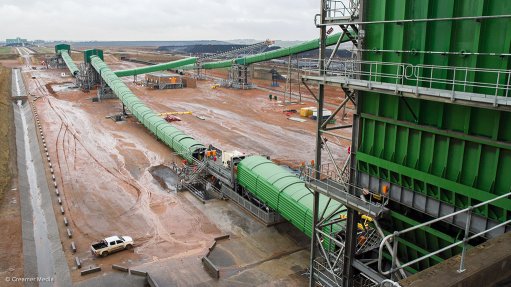
COAL PROCESSING The coal processing plant comprises a three-stage crushing process, which reduces the coal from about 1.5 m to less than 50 mm
Photo by: Duane Daws
Diversified miner Glencore’s Mpumalanga-based Tweefontein Optimisation Project (TOP) management team aims to ensure that no fatalities occur on site during the construction phase of the project and that the record is extended to the mine’s 26-year life-of-mine.
“TOP’s management has placed significant emphasis on ensuring all health and safety standards are met on site. This is illustrated by the fact that we recorded five-million injury-free work hours between November 2012 and February,” says TOP GM Allen Butcher.
However, he tells Mining Weekly that the mine has since recorded several minor injuries and has a cumulative lost-time-injury frequency rate of 1.2 for every million hours worked on site.
Butcher attributes the increased injuries on site to deadline pressures.
However, he emphasises that no major or life-threatening injuries have occurred.
“Glencore ensures that it reports all injuries that occur, therefore even very minor injuries have been reported and will continue to be reported,” states Butcher.
Skills Development
Glencore started an operator training programme in 2012 to assist in the upskilling of unemployed local community members by providing them with the opportunity to be trained as mine equipment operators.
The programme takes place at Glencore’s central training facility – which is located at Tavistock, about 10 km from the TOP – and practical training is done on the com- pany’s local operations.
“We take in groups of about 25 people at a time from the local communities and put them through formalised Mining Qualifications Authority-approved operator training programmes. At the end of their programme, if there is a job available on site, they are employed by the company. If not, then they are free to seek employment at other mining companies, with no obligation to us whatsoever,” says Butcher.
The training programme spans four months and includes six weeks of theoretical training, coupled with the use of high-tech simulators and eight weeks of practical training before the trainees receive their mining operator licences.
“The TOP training programme has had about 140 people participants to date,” Butcher concludes.